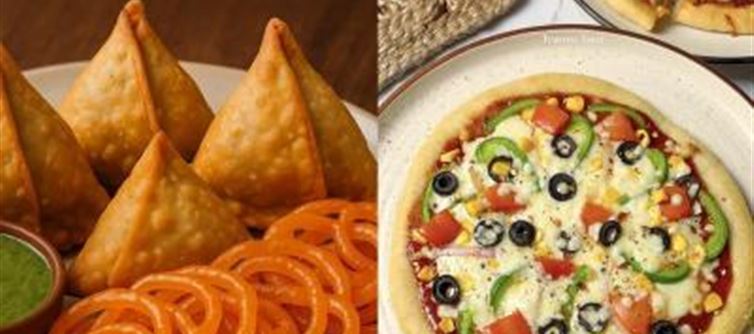On hearing the name of
samosa and Jalebi, every Indian's eyes light up. On the other hand,
pizza, this western dish, is on top of every party, outing and children's favourite list these days. But have you ever wondered what effect these delicious things have on our body? Which is the most harmful among these in terms of health. Hot
samosa, juicy Jalebi or
cheese filled pizza? However, the Union
health Ministry has refused to give any kind of warning for
samosa and Jalebi.
Nutritionist Dr. Karuna Chaturvedi says that there is a story behind every food item. It affects not just the taste, but nutrition and health. So let's know what is more dangerous in this triangle of taste. Samosa
Samosa is the most popular street food of India. Potato, spices and flour are used in it and then it is deep fried.
Due to refined flour and deep frying, it contains more trans fat which increases cholesterol.
A
samosa contains about 300 calories.
It can produce carcinogenic elements when fried in repeatedly heated oil.
Jalebi
The refined
sugar present in jalebi makes it dangerous.
A jalebi contains 100-150
calories, but it does not contain any fiber or protein.
Continuous consumption increases the risk of
diabetes, obesity and
heart diseases.
Pizza
Pizza contains a mixture of
cheese, refined flour and processed meat, which enhances the taste, but not health.
A slice of
pizza contains 250-350 calories.
It contains more saturated fat,
sodium and processed ingredients.
It can cause blood pressure,
heart diseases, and weight gain.
Which is more dangerous?
According to information, all these three food items are harmful if consumed in excess.
Trans fat and deep frying in
samosa are the biggest danger.
Sugar and empty
calories in jalebi can pose a serious threat to health.
Saturated fat and processed ingredients in
pizza are harmful for
heart and liver.
The special thing is that
samosa and jalebi are prepared at the same time. But the bread for
pizza is prepared in advance.






















